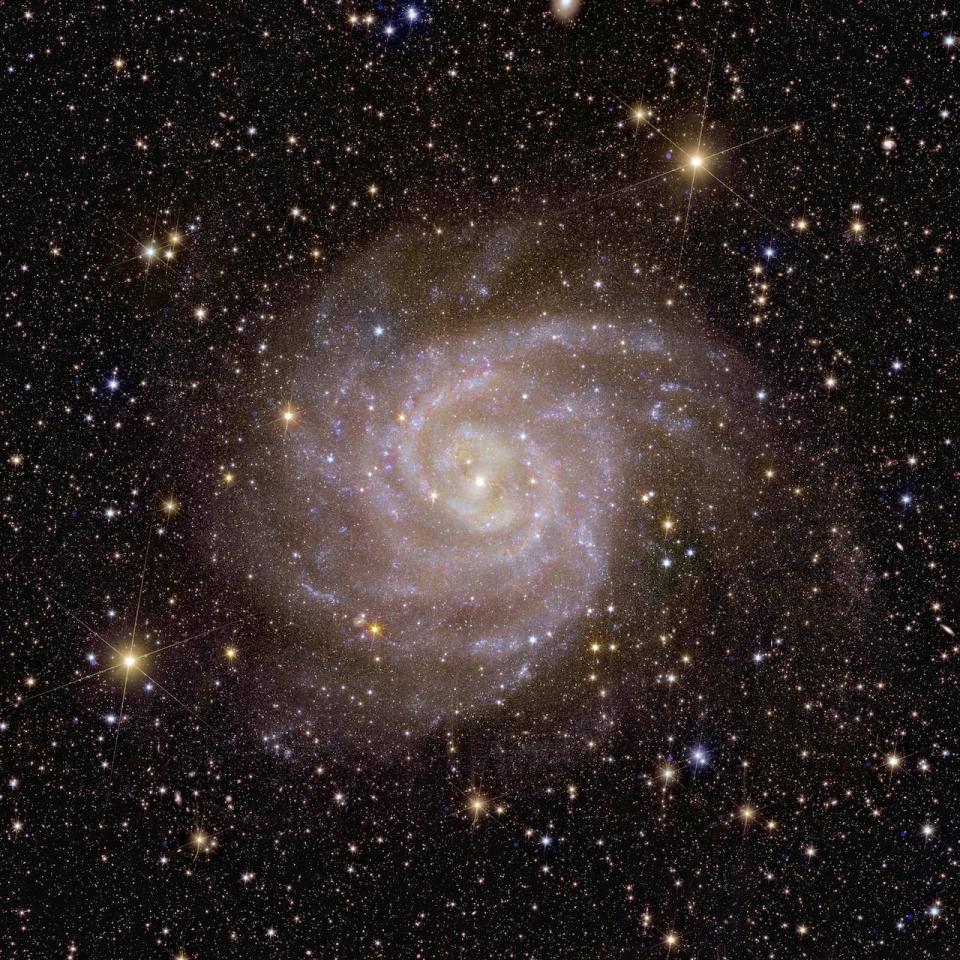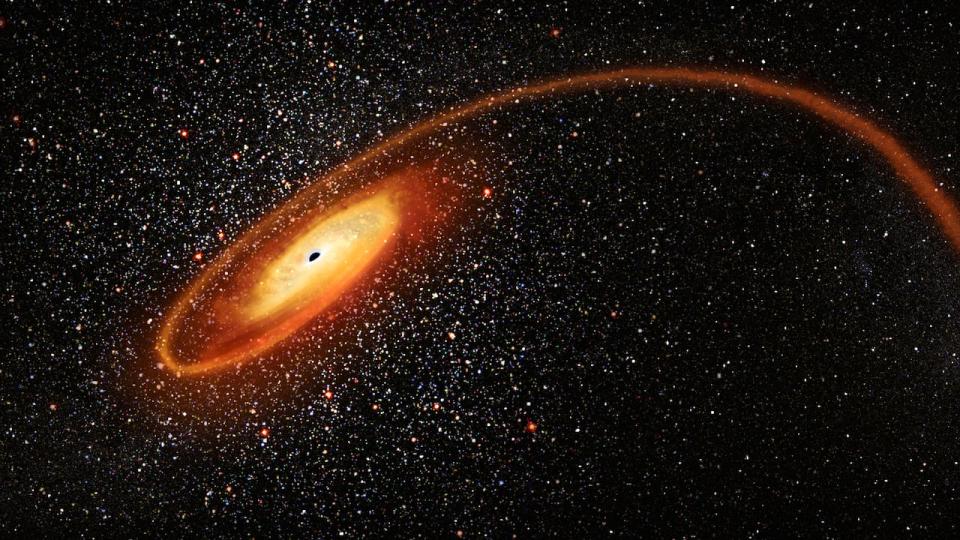Dark matter has never been seen before, but scientists think it could help explain the mysteries of the universe. And one Alberta researcher is trying to build a machine to detect it.
Dark matter is a major constituent of our universe, accounting for nearly one-third of it, according to NASA.
“Dark matter interacts gravitationally, we can see the effects of dark matter on galaxies,” said Marie-Cécile Piro, associate professor of physics at the University of Alberta.
“It’s very, very abundant.”
There are two other components in our Universe: dark energy – which is believed to drive the expansion of the universe – and ordinary matter, such as the stars, planets, trees and animals, which contains protons, neutrons and electrons.


Over its lifetime, Euclid, dubbed the ‘dark universe detective’ by the European Space Agency, will image billions of galaxies, revealing the invisible influence of dark matter and dark energy on them. (ESA/Euclid/Euclid Consortium/NASA; Image processing by J.-C. Cuillandre [CEA Paris-Saclay]G. Anselmi)
Dark matter is invisible. It does not absorb, reflect or emit light. Some scientists, according to NASA, think dark matter exists in a massive web-like structure that holds the visible universe together, like scaffolding at a construction site.
“We don’t really know what it is, but it could be a particle that we can detect on Earth,” said Piro.
Dark matter is thought to be five times more abundant than normal matter.
Who invented ‘dark matter’?
Swiss astronomer Fritz Zwicky was trying to measure the apparent mass of a cluster of galaxies in 1933, but found that the galaxies were too small to prevent them from escaping the gravitational pull of the entire cluster. Zwicky concluded that there must be something – like dark matter – keeping the galaxies stuck together.
Since then, other scientists have used dark matter to help explain what keeps galaxies from flying apart.
However, what dark matter is made of is still unknown.


The Bubble chamber detector at the SNOLAB underground laboratory in Sudbury Canada for the PICO dark matter experiment in 2018. (Submitted by Marie-Cécile Piro)
To help solve the mystery, Piro wants to build a detector to detect dark matter. She was recently awarded a Dorothy Killam Fellowship, worth $160,000, for her project.
However, it is not an easy task.
For one, the detector would have to be extremely sensitive.
“If we take one grain of salt and let it fall from one millimeter above the floor, the force that the grain of salt will make contact with the floor divided by 100 billion is the kind of sensor event we need to detect,” said Piro .
She aims to have the detector built by the end of the year, using a bubble chamber to track the movement of particles.
If successful, it could help unlock the secret to black holes, dark energy or even how the universe was born.
What if there is no dark matter?
Not all scientists agree on dark matter.
A study, published last month from the University of Ottawa, challenges the current model of the universe, suggesting that dark matter does not exist. The study, Testing CCC+TL Cosmology with Observed Features of Baryon Sound Oscillation, published in the peer-reviewed Astrophysical Journal.
“Dark matter explained so many things in the universe that people are very concerned with. But recently they are finding many things that cannot be explained by it,” said Rajendra Gupta, professor of physics and author of the study.


Cosmic carnage in action, as a way star is shredded by the intense gravitational pull of a black hole containing thousands of solar masses in an artist’s rendering obtained by Reuters April 2, 2020. (D. Player/NASA/ESA/Reuters)
NASA’s James Webb Space Telescope, Gupta said, has poked holes in the dark matter theory by capturing images of galaxies that appear to have grown too large too quickly, contradicting the current model of the universe.
But the massive sizes of the galaxies would make sense, if our universe is older, he said.
“That now means we have much more time to create these galaxies with or without dark matter than was possible with the original model.”
“There are so many options to the dark matter argument.”